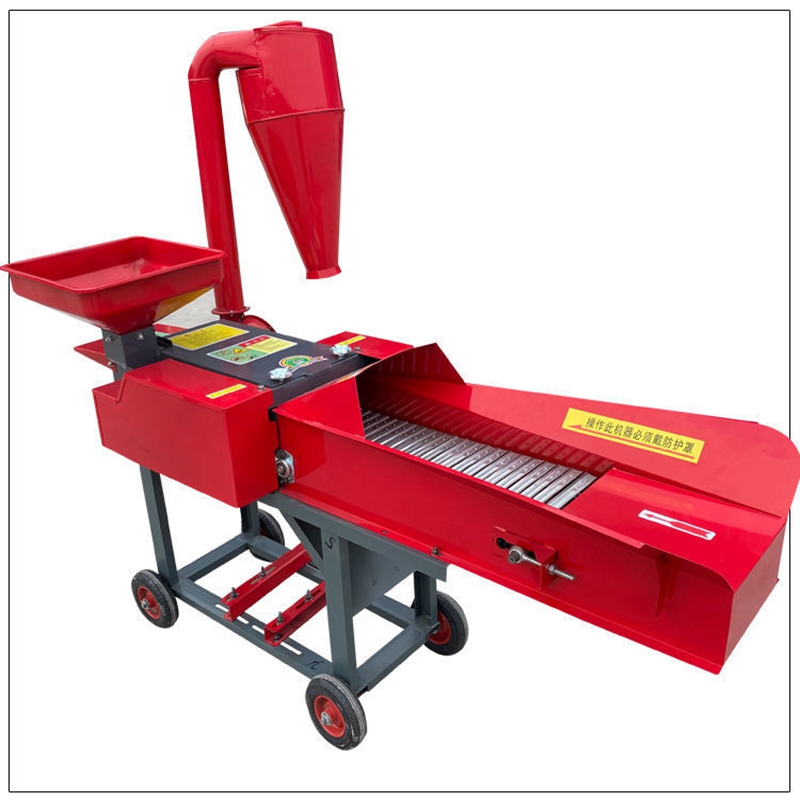Understanding Feed Mill Hammer Mill Efficiency and Applications in Animal Nutrition
Dec . 25, 2024 10:17 Back to list
Understanding Feed Mill Hammer Mill Efficiency and Applications in Animal Nutrition
Understanding Feed Mill Hammer Mills An Essential Component in Animal Feed Production
The feed milling industry plays a crucial role in the agricultural sector by transforming raw materials into high-quality feed that supports livestock health and productivity. At the heart of this process is the hammer mill, a vital piece of equipment used to grind and prepare various feed ingredients. In this article, we will explore the significance of hammer mills in feed mills, their working principles, advantages, and considerations for effective operation.
What Is a Hammer Mill?
A hammer mill is a type of grinding machine that is widely used in industrial applications, particularly in feed production. It consists of a rotating rotor equipped with hammers that strike the raw material, breaking it down into smaller particles. The size of these particles can be adjusted by changing the screen size and hammer configuration, allowing mill operators to produce a wide range of feed formulations.
The Working Principle of Hammer Mills
The operation of a hammer mill is relatively straightforward. When feed ingredients, such as grains (corn, wheat, barley), legumes, and additives, are introduced into the mill, the rotating hammers hit the material with high speed, consequently pulverizing it. The resulting particles are then forced through a screen, which allows those that meet the desired size to pass while retaining larger particles for further grinding.
Key parameters in the performance of a hammer mill include the speed of the rotor, the size of the hammers, and the screen size. Adjusting these parameters can significantly influence the efficiency of the milling process and the quality of the end product.
Advantages of Using Hammer Mills in Feed Production
1. Versatility Hammer mills can handle a wide variety of feed ingredients, including grains, seeds, and even some types of animal by-products. This versatility makes them an ideal choice for feed mills that produce different formulations.
2. Efficient Particle Size Reduction The ability to produce uniform particle sizes is crucial for optimal feed digestibility. Hammer mills excel in this regard, ensuring that the feed is ground consistently to enhance consumption and digestion by livestock.
3. Cost-Effectiveness Hammer mills are relatively inexpensive to purchase and maintain compared to other grinding systems. Their simplicity and robustness lead to lower operational costs, making them economically advantageous for feed producers.
feed mill hammer mill

4. Improved Feed Quality By achieving the desired particle size and uniformity, hammer mills contribute to improved feed quality. This, in turn, can enhance livestock performance, leading to better weight gain and feed conversion ratios.
5. Adaptability The design and configuration of hammer mills allow for easy adjustments and modifications that can be tailored to specific production needs. They can be equipped with various screens and hammers to optimize the milling process for different feed types.
Considerations for Effective Hammer Mill Operation
While hammer mills are beneficial, certain factors need consideration for optimal performance
- Maintenance Regular maintenance is essential to keep the hammer mill running efficiently. This includes checking the condition of hammers, screens, and bearings, ensuring that wear and tear do not compromise performance.
- Energy Consumption As with any machinery, hammer mills consume energy. Operators must monitor energy use to optimize efficiency and reduce operational costs.
- Safety Safety measures must be in place to protect workers from hazards associated with operating heavy machinery. Proper training and adherence to safety protocols are vital.
- Feed Formulation The effectiveness of a hammer mill is also dependent on the feed formulation. Exploring different ingredient combinations can lead to improved product quality and performance.
Conclusion
Hammer mills are indispensable in the feed milling industry, providing a means to efficiently grind and prepare animal feed. Their versatility, cost-effectiveness, and ability to produce high-quality feed make them a preferred choice in many operations. Attention to maintenance, energy consumption, and safety practices will ensure that hammer mills continue to play a vital role in supporting livestock health, productivity, and the overall efficiency of the agricultural sector. As technology advances, innovations in hammer mill design and operation are likely to enhance their performance further, keeping pace with the evolving demands of the feed industry.
-
Automatic Feeding Line System-Pan Feeder Nipple Drinker|Anping County Yize Metal Products Co., Ltd.
NewsJul.29,2025
-
Hot Sale 24 & 18 Door Rabbit Cages - Premium Breeding Solutions
NewsJul.25,2025
-
Automatic Feeding Line System Pan Feeder Nipple Drinker - Anping County Yize Metal Products Co., Ltd.
NewsJul.21,2025
-
Automatic Feeding Line System Pan Feeder Nipple Drinker - Anping County Yize Metal Products Co., Ltd.
NewsJul.21,2025
-
Automatic Feeding Line System - Anping Yize | Precision & Nipple
NewsJul.21,2025
-
Automatic Feeding Line System - Anping Yize | Precision & Nipple
NewsJul.21,2025






